This week, Apemeister Rich Handley takes you on a fascinating journey through the Greatest Apes Comics That Never Were! Today: Some of the greatest — and strangest — Marvel Comics stories that never saw print.
By RICH HANDLEY
When it comes to Planet of the Apes tie-ins, fans have gotten used to cancellation — particularly with regard to comic books. Long before Boom! Studios successfully entered the Apes arena, Marvel Comics, Malibu Graphics’ Adventure Comics imprint, Dark Horse Comics, Metallic Rose Comics and Argentina’s Editorial Mo.Pa.Sa. all saw their Apes runs prematurely aborted. This resulted in a number of proposed titles from each publisher never seeing the light of day.
While conducting research for a pair of Planet of the Apes reference books for Hasslein Publishing, I reached out to the writers and editors of the above series, hoping they might be willing to share some tidbits about their unpublished lore. What I received was staggering: not just brief descriptions but, in some cases, entire outlines or even scripts — and from every single writer, no less. Thanks to the generosity of these creative minds, I was able to work a wealth of previously unknown material into both books. With that, let’s take a look back at several time-lost comic books from the Planet of the Apes. Included are an assortment of published covers … and unpublished art!
MARVEL COMICS
“Future History Chronicles VI: The Captive of the Canals”
One of the most popular — and unusual — storylines of the Marvel run was Doug Moench’s five-part “Future History Chronicles.” Illustrated by Tom Sutton, “FHC” presented a new take on Planet of the Apes, in which humans and simians traveled the oceans on vast city-ships. The story focused on a human couple, Alaric and Reena, their friend Starkor and a gorilla architect named Graymalkyn, whose adventures brought them face to muzzle with great dangers both above and below sea-level.
The final issue ended on a cliffhanger, with the group escaping Her Majesty’s Cannibal Corps — ape mutants astride giant frogs — and discovering a great city on land, known as Sexxtann. For 30 years, their fate and the nature of the city remained a mystery to fans — but not to Moench. The writer had already outlined a sixth chapter in the saga, titled “The Captive of the Canals,” when Marvel opted to drop the Apes license after APJAC Productions upped the licensing fee. (Although it has long been assumed the series ended due to low sales, Moench explains that interest from both readers and Marvel remained high, and that only the increased fee necessitated cancellation.)
Initially, Moench says, he’d conceived the tale as a “King Kong riff,” in which a giant ape would be captured and transferred to the ruins of an already-destroyed Manhattan — an irony, in that this Kong would have been taken “from civilization to primitive ruins.” As Moench describes it, “The giant ape was not only a nuclear freak from the radiation, but was also insane from radiation sickness. He was intelligent, but he was crazy and destructive, and had to be appeased with sacrifices of human beings. He was a berzerker.”
Moench’s final concept was quite different, both in terms of storyline, and in the giant ape being female. Upon arrival at Sexxtann, Alaric’s team met the Industrialists, descendants of citizens from several African nations who blamed apes and Caucasian humans for the planet’s devastation and decided to form their own isolated civilization. The city, a 42-level hexagonal fortress, contained a vast canal system filled with giant amphibians, used for amusement, transportation and sustenance.
The Industrialists employed non-“green” methods of commerce, endangering the natural world. This angered the Cannibal Corps, ape environmentalists whose queen was captured and subjected to radiation and genetic experimentation, growing her to immense size and damaging her brain in the process. As such, she knew only a bastardized version of her title: Her Midgitsy. Banished from Sexxtann, Alaric’s team found the giant ape in a jungle at the city’s center. Her Midgitsy, lonely for her own kind, took a liking to Graymalkyn and gave her life to save his when the Industrialists torched the jungle. Her death throes toppled the walls, flooding the trees and drowning the childlike behemoth.
The outline specified an 18-page story, though an endnote urged editor John David Warner to consider 20 pages so Sutton could “heighten the drama, broaden the scope, increase the sweep, embolden the action, add a few more big blockbuster panels for the appropriate scenes, and in general make for a better story.” It’s unclear if Moench wrote a complete script based on the outline, but he was unable to locate one in his archives.
“Terror on the Planet of the Apes, Phase 2: To Meet the Makers”
Arguably the most “out there” of Moench’s Apes storylines was “Terror on the Planet of the Apes.” This long-running serial starred Jason (an angry human teen), Alexander (his chimpanzee friend), Lightsmith and Gilbert (an eccentric wayfarer and his mute gibbon companion), Malagueňa (Jason’s gypsy love interest) and Brutus (a racist gorilla military leader and the storyline’s main villain).
As with “FHC,” “Terror” ended without resolution. Thaddeus, the Lawgiver’s orangutan attendant, was captured and cyborged by the insane Makers, whose berserker creations, the Gorilloids, tried (and failed) to help Brutus destroy Ape City in issue #29. Had Marvel kept the title running, Moench had planned a 38-page “double-length special” titled “To Meet the Makers.” Herb Trimpe, who’d drawn several “Terror” entries following the departure of artist Mike Ploog, was assigned to illustrate this one as well.
In Moench’s outline, Thaddeus, now controlled by the Makers, tried to kill Lightsmith, forcing him to impale the young ape with an ancient rusty hypodermic needle, making him deathly ill. The wayfarer tried to cure the Lawgiver—who’d been dying since the previous storyline—by consulting an old medical text citing glycerin as a treatment for heart ailments. Unfortunately, Lightsmith mistook nitro-glycerin for the medication and nearly blew up the Lawgiver while trying to save his life.
If such a scene seems a bit wacky … it was. But given Lightsmith’s personality, it was fitting and worked quite well. Far more over the top was the Makers’ latest creation: Smashore, a nine-foot-tall albino Gorilloid with a hole in his head to propel bombs, as well as a utility belt, bionic eyeballs able to shoot death rays, and fingertip laser-shooters — a reminder that although it was set in the Planet of the Apes universe, Marvel’s “Terror” was, first and foremost, a comic book.
Defeating Smashore with the help of his old friends Steely Dan and Gunpowder Julius, Jason learned that Alex’s house had been burned down by human racists wearing black hoods, just as Brutus’ Ape Supremacists had killed his family in the first issue. This made the youth realize he’d been wrong to hold onto hatred and, in what would have been a turning point had “Terror ” continued, Jason decided to make peace with Brutus—only to find that the gorilla had escaped.
“Journey to the Planet of the Apes”
Moench’s third ongoing storyline, involving 20th-century inventor and time traveler Derek Zane, was also unfinished and, had the Marvel series continued beyond #29, would have become the magazine’s mainstay. With Marvel’s film adaptations completed, Moench needed a new focus for issue #30 onward, and the Zane saga fit the bill. Originally titled “Return to the Planet of the Apes,” this storyline — which he describes as “John Chimper of Mars,” referencing Edgar Rice Burroughs’ Mars novels — was ultimately renamed “Journey to the Planet of the Apes” to avoid conflicting with the animated series.
The script for “Journey” began in 1974, with NASA’s Dr. Krigstein (last seen in issue #9) investigating Zane’s disappearance. Krigstein found Zane’s scientific papers, including plans for his time machine, the Temporal Displacement Module. Using Zane’s equations, NASA built its own model — the Chronos I — so it could rescue Zane from the year 3976. Two “tempunauts,” Mara Winston and Jackson Brock, were chosen for the mission, though Brock only volunteered to profit from knowledge of the future.
In that future, Zane befriended Faron, a chimp scientist who’d found a bubble-domed, human-built city, now inhabited by apes. Branded a heretic, Faron was hunted down by Jurando, a gorilla intended to become a recurring villain. Brock would also have become an ongoing enemy, as his failed attempt to strand Winston in the future would have resulted in the time machine’s destruction and the loss of his own eye. The opening chapter of “Journey” concluded with Jurando’s gorilla squadron capturing them both.
While Marvel’s monthly magazine was published in the United States, a weekly, serialized version was also released in Britain, requiring the commissioning of additional covers. Issue #117’s cover, by artist Val Mayerik, appeared unconnected to the stories within, as it featured two astronauts in an arena setting, surrounded by gorillas. This led some to wonder if it might, perhaps, have been part of an aborted story.
Moench’s notes for “Journey” offer a clue to the story behind that cover, as his outline began with the following notation: “VAL: Since this is our effort to ‘continue’ the adaptations with an original ‘adaptation’ of our own … the series should bear a stamp similar to the previous movie adaptations — emphasis on movie-type schtick & settings — episodic cliffhanger chapters — a feeling of broad sweep & scope — greater reliance on dialogue, etc., etc. In fact, this new series should seem more like the movie stuff than like the previous appearances of its major character in Apes #9, 10, & 21.”
The use of the name “Val” would seem to indicate the cover to issue #117 had been created to accompany the “Journey” storyline, but had been altered—two male astronauts instead of a male and female — to fit the films’ “male astronaut” motif. This supposition, however, is unconfirmed.
“Beyond the Planet of the Apes”
A second note to Mayerik and Warner laid out Moench’s plans beyond the opening script, indicating Zane and Faron would have eventually befriended Winston and met a chimp woman from the civilized ape city, providing love interests for both males. Brock would have amassed a renegade army of gorilla followers, and Zane would have ultimately been reunited with his wife and friends in Avedon.
This, Moench says, would have segued into “a number of successive ‘movie’ sequels.” After eight or ten chapters of “Journey,” he planned to launch into a new ongoing storyline titled “Beyond the Planet of the Apes,” in which Zane’s group would have blasted off for another planet. “And think about it,” Moench says. “If 20th [Century] Fox had continued with more movies, wouldn’t such a plotline have become inevitable…? Apes in spacesuits — up against aliens (instead of more mutants) with rayguns, etc.?”
Ultimately, Moench wrote in his outline, “our characters would be ready for a return to Earth — but maybe a return (via Charlton Heston’s original astronaut time-jump) back to 1976 … rather than their intended 3976. After that, of course, Zane would decide he’s still a misfit in his own milieu, get homesick for Lady Andrea back in Avedon circa 3976, build himself yet another time machine, and … ad infinitum.” This, he noted, would have occurred around issue #60, indicating his plans for Apes stretched far into the future, well beyond Marvel’s 29th issue.
“Forbidden Zone Prime”
Although Moench maintains archives of his past work, he is unable to shed light on another mystery. In March 2006, a page of original Marvel Planet of the Apes artwork was discovered for sale online that had not come from any of Marvel’s published tales. That single page featured a chimp architect named Viraga, who was furious at her husband Julius for some vague offense. Apologizing for his actions, Julius told her he’d grown cynical and bitter in his old age, unable to accept the cruelty ape society inflicted on humans. As he spoke, the young-at-heart chimp executed acrobatic flips and jumps around the town square.
Attempts to locate additional portions of this story yielded a handful of pages (including, thankfully, the title spread), thanks to art collector Edward Haber, but to date, the story remains incomplete. Moench himself cannot recall any additional details, but admits “Viraga is just the sort of name I would come up with.” This story, he believes, was slated for a 30th issue that was created but never printed, though he cannot locate the script or the completed issue in his files.
The additional material provided some context to that first page of Viraga and Julius: Viraga, a respected chimp architect, felt humiliated that Julius publicly belittled her adherence to strict architectural forms. Though she loved Julius, she had little respect for his non-acceptance of ape-dominance rhetoric, or his fondness for archaic poetry — plus, his bond with a primitive human woman named Steena widened the rift between them. More intelligent than other humans of her era, Steena wished apes could let go of their hatred and learn to love humans — and each other. Eventually, a gorilla soldier named Zandor nearly killed Steena just for being human. Julius risked his life to save hers, but knew their bond would be unable to change the hatred of society.
Bob Larkin created a stunning cover painting for this story, but no more has been unearthed regarding the content, including its ending. But the real mystery of this tale involves the artwork, for although the page is credited to Sonny Trinidad, the Filipino artist, upon being contacted in an effort to obtain additional pages, denied having produced any such illustrations. It’s possible Trinidad may have forgotten about this particular assignment, given his age — or that the name on the art page was erroneous, and that it was, in fact, illustrated by someone else.
Untitled Comic Strip
When Australian publisher Newton Comics began offering Marvel reprints in 1975, editor John Corneille hoped to see Newton produce original comic strips as well. Corneille suggested Planet of the Apes since it was Newton’s best-selling reprint at the time. Newcomer Philip Bentley was slated to write the script, with art by penciller Colin Paraskevas and inker Greg Gates. “It was the closest thing we felt we were likely to get to working in the industry,” Bentley explained at the pulpfaction.net message forum in 2007, “and [we] welcomed the opportunity to approach a strip from a commissioned perspective.”
Bentley posted the six-page script he came up with, which starred Byron, a 30-something chimp branded a heretic for attempting to teach humans how to read. Byron was betrayed to the authorities by his wife, but when the orangutans excused his crime due to his being related to a famous scientist, the arresting gorilla became furious and vowed to kill him.
“I make no claims as to the strip’s quality,” Bentley wrote on the forum, “and present it here, firstly, because others expressed an interest in seeing it and, secondly, because it is yet another of those curious sidelights that the Australian comics scene seems peppered with — indeed, I might suggest that aspects of the scene are almost entirely made up of sidelights, more’s the pity. I admit that it is little more than what a fan might have come up with, but given that none of us were great devotees of POTA (does that make fans ‘Apeies’ or ‘Potties’?) I think we did bring a sense of detachment to the project that helped our proto-professional stance.”
Eventually, Newton Comics pulled the plug on the concept. “At the time,” Bentley explained, “I don’t think we knew whether it was hit on the head here or in the States. From what I know now, I am sure that it never was run by Marvel. From all reports, publisher Maxwell Newton, who was using that unholy triumvirate of comics, pop magazines and porn to run a recently acquired ‘über printing press’ 24-7, only ever made one down payment for the reprint rights and then conveniently was ‘never in’ when Marvel rang trying to get him to cough up the rest.”
Bentley no longer recalls where the story would have gone had it been allowed to proceed, but posted, “My notes made during our initial conference don’t really align with the story as it came together. According to these, we were thinking of using child apes as the protagonists, as ‘kids seem to like pretending being apes’ (those of us with a grumpy-old-man disposition may well agree with that, although not in the way we meant it at the time).”
Battle for the Planet of the Apes
A limited-edition book collecting all of Marvel’s unpublished Doug Moench Apes efforts (but not Bentley’s strip) is being assembled by a publisher that has not yet announced the project and thus cannot yet be named; watch for further details by early 2014. (Full disclosure: I helped the publisher acquire material for that book, and contributed two introductory essays.) Also included in the collection will be three pages of artwork cut from Marvel’s adaptation of the film Battle for the Planet of the Apes, which surfaced online a few years ago, involving General Aldo rallying his soldiers to rebel against Caesar. The collection will, indeed, be a marvel to behold.
—
NEXT: Malibu Graphics
Rich Handley is the co-founder of Hasslein Books (hassleinbooks.com) and the author or co-author of six books: “Timeline of the Planet of the Apes,” “Lexicon of the Planet of the Apes,” “The Back to the Future Lexicon,” “The Back to the Future Chronology” (with Greg Mitchell) and two upcoming official Continuum episode guides (with Ed Gross). He has written numerous articles and short stories for the licensed Star Wars universe, helped edit Realm Press’ Battlestar Galactica comics and currently writes for starwars.com and Bleeding Cool Magazine. A former reporter for Star Trek Communicator, Rich helped GIT Corp. compile its Star Trek comic book DVD-ROM sets, wrote the introductions to IDW’s Star Trek newspaper strip reprint books and contributed to Sequart’s “New Life and New Civilizations: Exploring Star Trek Comics anthology.” In addition, Rich helped revise Ed Gross’s “Planet of the Apes Revisited” and has contributed to the POTA fanzine Simian Scrolls, in which an earlier version of this article appeared.

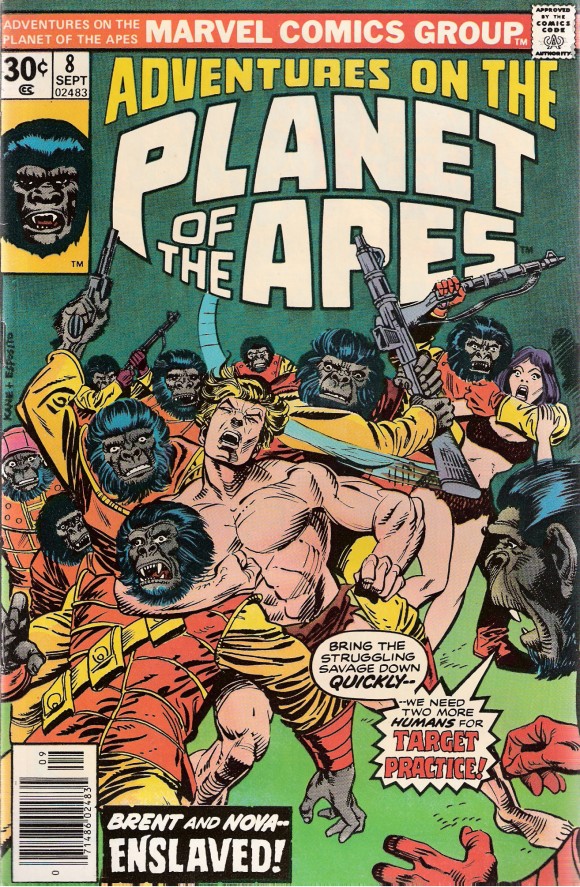
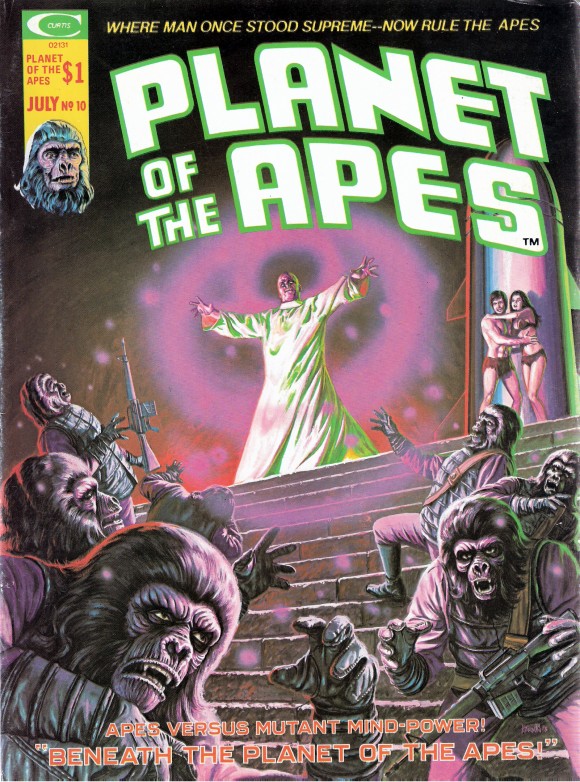
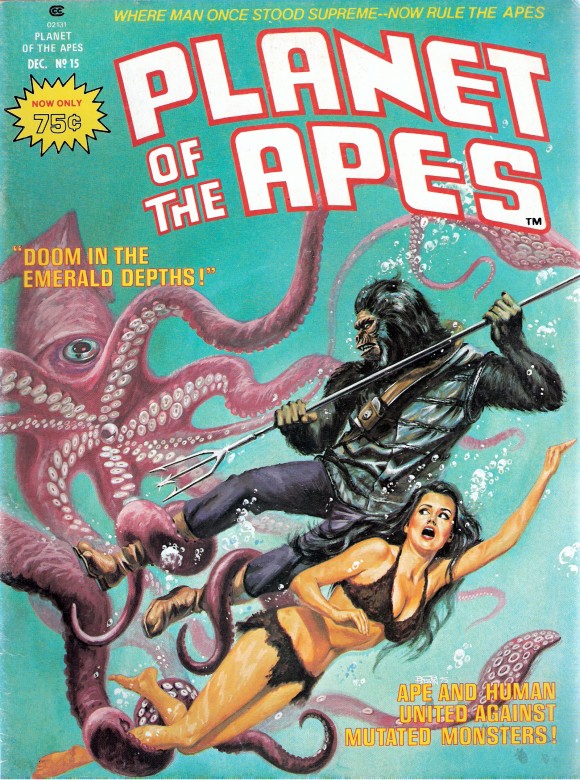
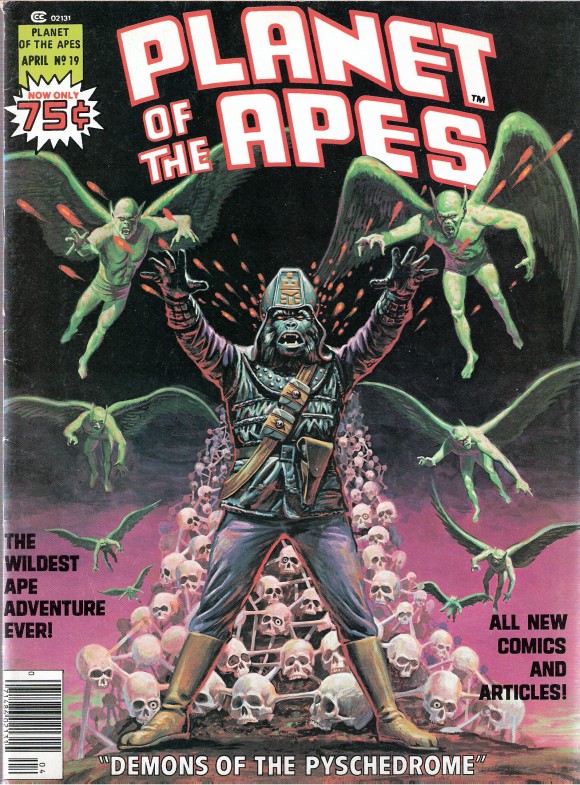
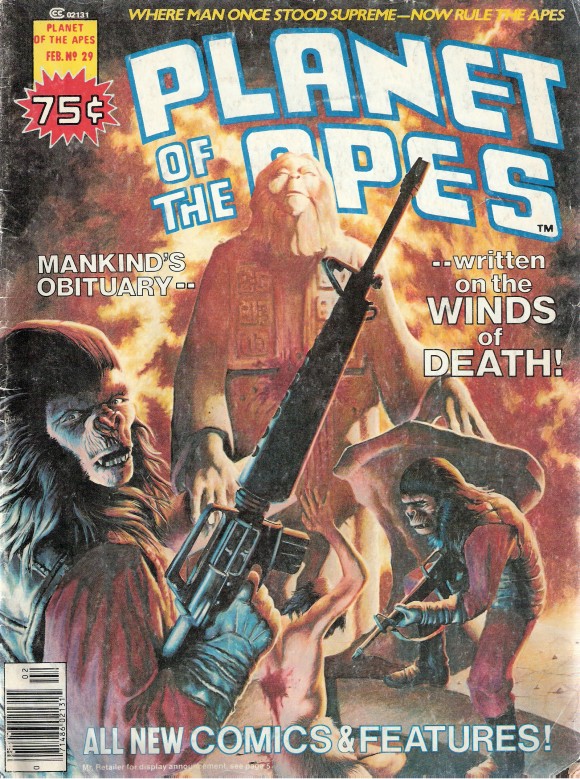
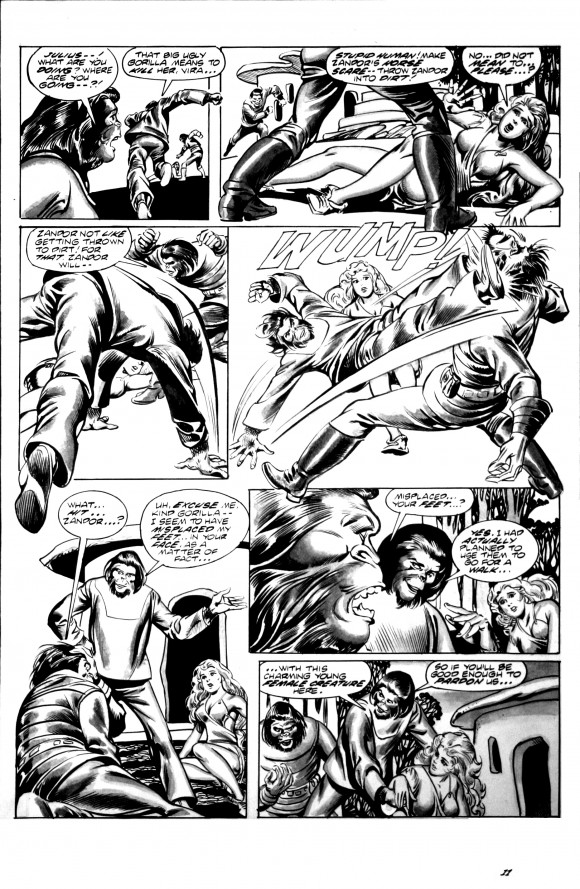
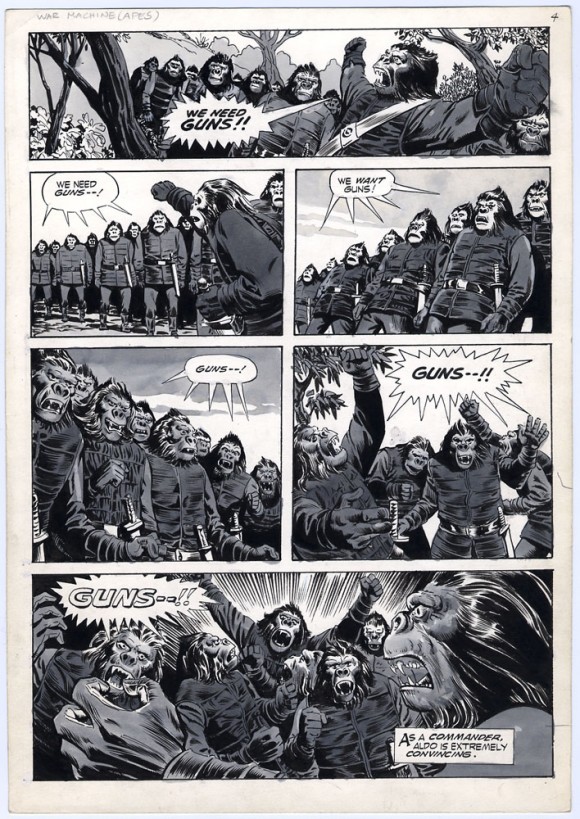
October 29, 2016
re:Unpublished art from Forbidden Zone Prime, looking at the layout of the action on this page, I would say the pencils are definitely Rico Rival, under somebody else’s inks